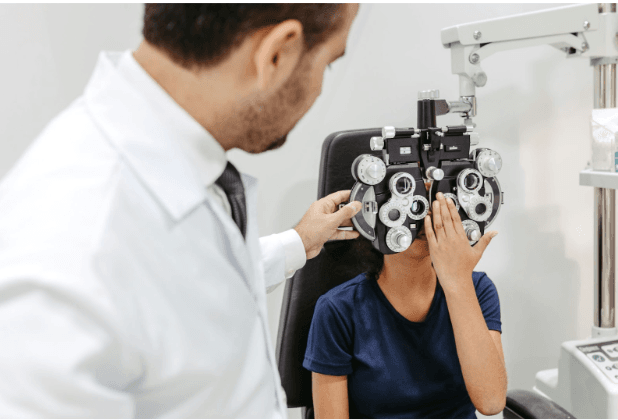Taking care of your eyes is more than a matter of seeing clearly—it’s an integral part of your overall health and well-being. According to Optometrist Randall Melchert, many people overlook the importance of an annual eye exam, assuming that if their vision feels fine, there’s nothing to worry about. Vision can change subtly, and many eye-related issues develop without obvious symptoms.
In today’s digital world, where screens dominate work and leisure, our eyes are under more strain than ever. Establishing a habit of routine vision care ensures that all ages, from children to retirees, receive the attention their eyes deserve. Whether you’re managing screen fatigue, safeguarding against aging-related eye diseases, or simply maintaining peak performance in daily life, annual eye exams are a small step with lasting benefits.
Contents
Eye Exam Vision Checks
Many people assume that if they can see clearly, their eyes must be healthy. But annual eye exams do more than just measure how well you can see. They offer a deeper look into the overall condition of your eyes and can reveal early signs of serious problems like glaucoma, cataracts, and macular degeneration—issues that often develop without apparent symptoms.
Regular appointments allow eye care professionals to monitor subtle changes that might otherwise go undetected. A person might have increasing pressure in the eye or early signs of retinal damage without realizing anything is wrong. Through simple tests, optometrists can catch these conditions early, when treatment is often more effective and less invasive. Some of these tests take only minutes but can reveal crucial data.
Even if your vision seems stable, skipping routine exams can mean missing the start of long-term issues. Just like routine physicals help prevent broader health concerns, eye exams are an essential part of maintaining long-term wellness. People with a family history of eye disease benefit especially from regular monitoring.
How Subtle Vision Changes Affect Daily Life
Vision changes can creep in gradually, making them easy to overlook. You may not notice that your eyesight has shifted until tasks like reading fine print or seeing road signs at night start to feel more difficult. Waiting until the problem becomes obvious can impact your safety and quality of life. In children, undetected vision issues can affect school performance without the child being aware of the problem.
Someone who stares at a computer all day might not realize they’ve developed eye strain or slight blurring, which can affect productivity and comfort. Small adjustments in corrective lenses or lifestyle habits often make a noticeable difference. Even subtle misalignments or outdated prescriptions can cause headaches or neck strain over time.
Even activities like watching TV or using a smartphone can feel more tiring when your vision isn’t properly corrected. Staying ahead of these minor changes helps you avoid unnecessary stress on your eyes and maintain better focus throughout the day.
The Connection Between Eye and Overall Health
Your eyes can reveal more than just how clearly you see—they often show early indicators of underlying health problems. During a comprehensive eye exam, an optometrist might spot signs of conditions like high blood pressure, diabetes, or even high cholesterol, sometimes before other symptoms appear.
A person with undiagnosed diabetes, for example, might show tiny blood vessel changes in the retina. These subtle clues allow eye professionals to recommend further medical evaluation, potentially catching a serious condition before it worsens. It’s one of the few times a non-invasive, routine check can provide such valuable insight into your health.
Vision Care at Every Age
Good vision plays a vital role in every stage of life, from early development to aging gracefully. Children who struggle to see the board at school or read their assignments may fall behind academically, not because of ability, but because of undiagnosed vision issues. Early detection gives them the best chance for success.
As adults, the pressures of digital work environments, long hours on screens, and lifestyle habits can contribute to eye fatigue and changing vision needs. In older adults, regular eye care becomes even more critical, as age-related conditions like cataracts and macular degeneration become more common and harder to reverse without early care.
Digital Habits
With so much time spent on phones, tablets, and computers, our eyes are under constant strain. Prolonged screen use can lead to issues like dry eyes, blurred vision, and persistent headaches. These problems often build slowly, making it easy to dismiss them as normal. Younger generations, especially, may not realize the toll screen time is taking on their sight.
An annual eye check helps track how digital habits are affecting your vision and provides strategies to ease the strain. A teenager glued to their smartphone or an adult juggling multiple screens at work may unknowingly place stress on their eyes throughout the day. Simple changes—like adjusting lighting or taking scheduled breaks—can restore comfort and prevent problems. These adjustments can also help improve sleep and concentration, which are often disrupted by excessive screen time.
Making Exams a Simple Routine
Fitting an eye exam into your schedule doesn’t have to be a hassle. Most appointments are quick and informative, offering a snapshot of your eye health and a chance to ask questions. Knowing what to expect helps reduce hesitation and makes it easier to stay consistent. Clinics often offer flexible scheduling, including evening or weekend times.







